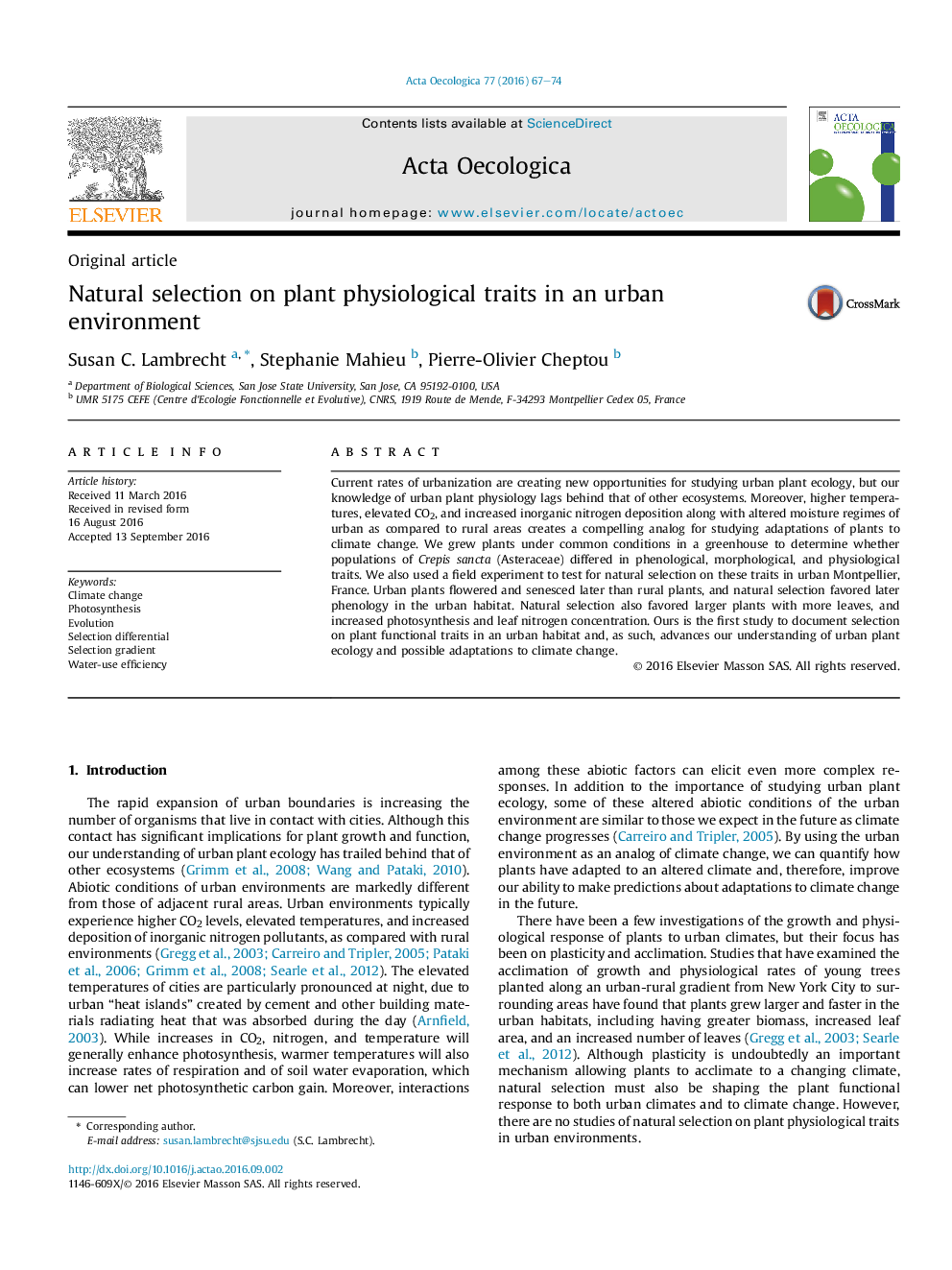| Article ID | Journal | Published Year | Pages | File Type |
|---|---|---|---|---|
| 4380598 | Acta Oecologica | 2016 | 8 Pages |
•We used an urban environment as an analog for climate change to test for selection.•Urban plants were larger and flowered and senesced later than rural plants.•Urban plants also had increased photosynthesis and leaf nitrogen concentration.•Natural selection in the urban environment favored observed trait differences.
Current rates of urbanization are creating new opportunities for studying urban plant ecology, but our knowledge of urban plant physiology lags behind that of other ecosystems. Moreover, higher temperatures, elevated CO2, and increased inorganic nitrogen deposition along with altered moisture regimes of urban as compared to rural areas creates a compelling analog for studying adaptations of plants to climate change. We grew plants under common conditions in a greenhouse to determine whether populations of Crepis sancta (Asteraceae) differed in phenological, morphological, and physiological traits. We also used a field experiment to test for natural selection on these traits in urban Montpellier, France. Urban plants flowered and senesced later than rural plants, and natural selection favored later phenology in the urban habitat. Natural selection also favored larger plants with more leaves, and increased photosynthesis and leaf nitrogen concentration. Ours is the first study to document selection on plant functional traits in an urban habitat and, as such, advances our understanding of urban plant ecology and possible adaptations to climate change.
